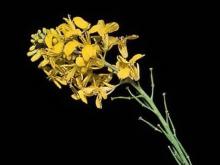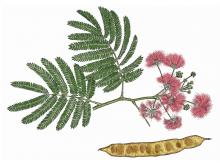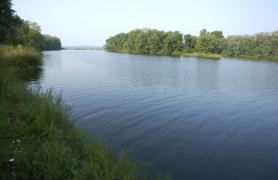
A disturbed habitat is one where the natural succession in a plant community is interrupted regularly or frequently.
Sometimes the disruption is frequent and intense — as along roadsides or in mining areas — leading to a dominance of weedy plants. These are highly disturbed habitats.
But disturbances can also be less frequent and less severe. Some disturbance is actually vital for maintaining some of our natural habitats that are, by definition, disturbance-adapted habitats.
Some plants and animals can live, even thrive, in highly disturbed habitats. As always, we need to understand the habitat in order to understand any plant or animal. And learning about habitat disruptions helps us find ways to care for our natural habitats.
Disturbed Habitats: Succession Interrupted
Ecologists long ago recognized the concept of ecological succession: if a landscape is made completely bare, a predictable series of plant types begin to grow there, gradually replacing one another, until one type of plant community remains more or less stable — until something else happens to disturb it.
The textbook example is of a barren rock landscape, which is first colonized by lichens and mosses, which gradually break down the rock to form soils. Then, grasses and other small, herbaceous annuals arrive from somewhere else (many of these often have seeds that blow in the wind) and take root. As they grow and die and decompose, soils are developed further. Grasses and forbs increase in diversity and size, building up the soils. Then small trees and shrubs begin to appear in the grassland, creating shady places. Eventually, larger trees get established, and ultimately a forest develops.
A disturbed habitat is one where succession is interrupted regularly or frequently. Disturbances can be human-caused or natural. Lots of things can denude or churn up the soil, or prevent trees from getting established, setting back the succession process. Human disturbances include plowing, digging, construction activities, mowing, spraying weed killers, clearing land for a garden, burning, livestock overgrazing, and so on. Natural disturbances include lightning strikes and fire; strong winds, ice storms, and tornadoes that topple or damage trees; heavy rain, flooding, hail, and erosion; drought; earthquakes; and even (historically) the periodic intense grazing by vast herds of buffalo.
The plant community varies depending on severity and frequency of the disruption. If the disruption is frequent and intense, the plant community usually is dominated by early-successional plants. Many of these are the same plants that take root in gardens and crop fields and that we call weeds. Invasive and nonnative plants often abound in these places, but many native species are quick to take root, too. Examples of highly disturbed sites include the following:
- Roadsides, highway medians, railways, rail yards
- Former railways (such as along the Katy Trail)
- Parking lots, vacant lots
- Suburban yards and other places near buildings
- Crop fields, old fields, hayfields, pastures, fencerows
- Mines and industrial land
- Banks of streams and rivers
- Gravel and sand bars
Stream banks and sand and gravel bars are great examples of naturally highly disturbed habitat, as they are continually being eroded, washed away, and built back up by the stream. Often, invasive, nonnative plants such as wintercreeper and teasels get a toehold on stream banks — even deep within large tracts of native habitat — because they arrive in the form of seeds or cuttings swept there by the water, far from the roadside or backyard where they originated. Meanwhile, several native species of willows, sedges, scouring rush, and other plants are also adapted to thrive on stream banks.
Some Plants Need Periodic Disturbance
In addition to the natural disturbances that occur along streams, there are other circumstances where some amount of disturbance is natural and even desirable.
Some native plant communities will endure only if they experience disruption, as long as it is not severe and is relatively less frequent. These plant communities are sometimes called subclimax or ecotonal communities. They include prairies, savannas, glades, and woodlands. In these cases, the disturbance is relatively mild and occurs frequently enough to prevent the habitat from converting to the next stage in the succession. In most cases, it is occasional fire that prevents shrubs and other woody plants from getting established, while deep-rooted grasses and forbs are actually invigorated.
For decades, conservationists and land managers have been learning about the best frequency and timing of fires in order to maintain our prairies, savannas, glades, and woodlands. In most cases, they are learning to replicate the regime of lightning-set and Native American-started fires that occurred for thousands of years before European settlers arrived.
In woodlands and savannas, for example, if the fires don’t occur frequently enough, too much undergrowth accumulates, causing a fire to burn too hot and causing damage to mature trees that should otherwise survive the burn. If burned at optimal intervals, the fire is less intense, removing only small or young woody plants, not killing the older trees, and cleaning the forest floor of dried grass stalks, leaf litter, and other tinder, reinvigorating growth of native, perennial, herbaceous species.
Another example of a natural disturbance occurs in wooded areas when a big tree falls — typically due to strong winds — and creates a sunny clearing. Often, the roots of the blown-over tree are torn out of the ground, forming “tip-up mounds” that expose bare soil. Sunny treefall clearings are small habitats unto themselves, and many species of herbaceous plants and accompanying animals appear in them, increasing the diversity of the forest as a whole. In a typical Missouri forest or woodland, about 1 percent of the area experiences a treefall gap each year. Many seedling oaks and other forest trees get their start in these clearings, where they do not need to compete for light in the shade of mature forest.
About Early-Successional Plants
Botanists recognize that certain traits help some plants to excel at dispersing, getting established, growing, and thriving in less-than-ideal circumstances, and reproducing prolifically. When a plant possesses many of these characteristics, it is often described as weedy, whether it is unwanted or wanted. To avoid the pejorative undertones of the term, many specialists prefer to call “weedy” plants “early successional” instead. No matter what term you use, these plants are good at colonizing bare ground quickly. The common dandelion is a great example. Think about how it shares the following characteristics with other early-successional plants:
- Each plant produces many, many seeds, which typically stay viable a relatively long time and germinate readily.
- The seeds are often small and disperse widely and easily, often through a variety of mechanisms (blowing on the wind, floating in water, sticking to animal fur, etc.).
- Plants grow successfully in poor or shallow soils and in a wide variety of habitats, and they aren’t finicky about how much water or light they receive.
- Plants adjust their growth habit to their environment (for example, a dandelion can bloom and produce seeds whether it grows a foot high, competing with grasses in a pasture, or is mowed on a lawn to only an inch high).
- Rootstocks are often rugged and resprout if the top of the plant is broken off.
- Many species can reproduce by cuttings, broken-off bits of roots, or by runners, so even if they don’t produce seeds, they can still spread rapidly.
- Plants often contain bitter or toxic chemicals, hairs, or spines that deter herbivores.
- Plants grow quickly, often spreading out basal leaves or branches to shade out and prevent other plants from growing nearby.
Although noxious, invasive, and nonnative plants get a lot of attention, not all early-successional plants are such bad news. Early-successional plants serve an important role as early colonists in bare ground. Their quick arrival after a disturbance and rapidly established networks of roots help stabilize soils and prevent erosion.
Remember that many nonnative plants are not invasive. Henbit, for instance, is a seasonal early-successional annual with shallow roots that rarely gets a toehold in healthy natural communities. Day lily, spreading via underground rootstocks, establishes colonies along roadsides and can persist at old homesites, but it, too, rarely penetrates native natural communities. A truly invasive plant is one with the capacity to take over even healthy natural communities.
Early-successional plants provide cover, nest space, and food for many animals. Think of a brushy fence row along a country road, and how it is a magnet for butterflies and birds.
Many native Missouri plants are early-successional, too, causing trouble only when they grow in a crop field where they conflict with human interests. They are also problematic when they become established in prairies and other disturbance-adapted native habitats that have been deprived of the disturbance they require. Red cedar is a native early-successional tree that disrupts native prairies and glades in the absence of fire.
Our native milkweeds are an important example of native early-successional plants. Because monarch butterflies rely on them as food plants, they are a critical component of our native ecosystems. Many native plants fit this “weedy but welcome” category.
The list of plants below includes both invasive nonnatives as well as native plants that are good at colonizing bare places.
Statewide

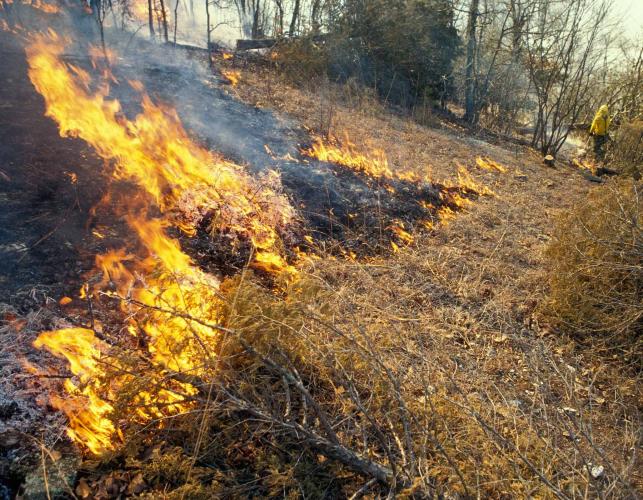


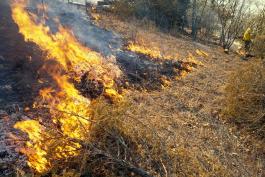

Key species





